
Mariënburg: A Hidden Gem in Suriname
Discover Mariënburg in Suriname: A perfect blend of history, nature, and tranquility, offering a unique experience for history buffs and nature lovers alike.
Mariënburg, located in the Commewijne District of Suriname, offers a unique blend of history, culture, and natural beauty. This small town is best known for its historical sugar plantation and factory, which dates back to the late 19th century. The remnants of these once-thriving industries provide a fascinating glimpse into the past and are a must-visit for history buffs. The town is surrounded by lush greenery and scenic landscapes, making it an ideal spot for nature lovers. You can take a leisurely stroll along the riverbanks or explore the nearby mangrove forests. Birdwatchers will be delighted by the variety of species that can be spotted in the area. Mariënburg is also a gateway to other attractions in the Commewijne District. From here, you can easily visit the historic town of Nieuw Amsterdam or take a boat trip to spot dolphins in the Suriname River. Whether you're looking to delve into the country's colonial history or simply relax in a serene environment, Mariënburg has something to offer.
Local tips in Mariënburg
- Visit the old sugar factory to get a sense of the town's historical significance.
- Take a boat trip from Mariënburg to see the playful dolphins in the Suriname River.
- Bring binoculars for birdwatching; the area is rich in diverse bird species.
- Wear comfortable walking shoes for exploring the historical sites and natural trails.
- Local guides can offer valuable insights into the history and ecology of the region; consider hiring one for a richer experience.
Mariënburg: A Hidden Gem in Suriname
Mariënburg, located in the Commewijne District of Suriname, offers a unique blend of history, culture, and natural beauty. This small town is best known for its historical sugar plantation and factory, which dates back to the late 19th century. The remnants of these once-thriving industries provide a fascinating glimpse into the past and are a must-visit for history buffs. The town is surrounded by lush greenery and scenic landscapes, making it an ideal spot for nature lovers. You can take a leisurely stroll along the riverbanks or explore the nearby mangrove forests. Birdwatchers will be delighted by the variety of species that can be spotted in the area. Mariënburg is also a gateway to other attractions in the Commewijne District. From here, you can easily visit the historic town of Nieuw Amsterdam or take a boat trip to spot dolphins in the Suriname River. Whether you're looking to delve into the country's colonial history or simply relax in a serene environment, Mariënburg has something to offer.
When is the best time to go to Mariënburg?
Iconic landmarks you can’t miss
Palmtree Garden
Explore the tranquil Palmtree Garden, an urban oasis in Paramaribo filled with lush greenery, cultural art, and serene walking paths.
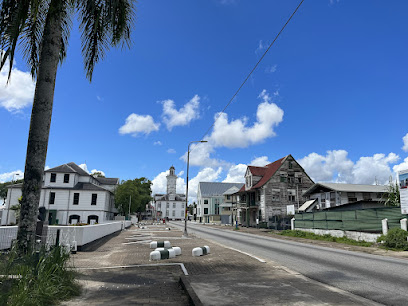
Fort Zeelandia
Explore Fort Zeelandia, a historical museum in Paramaribo, Suriname, showcasing the nation's colonial past amidst stunning architecture and riverside views.
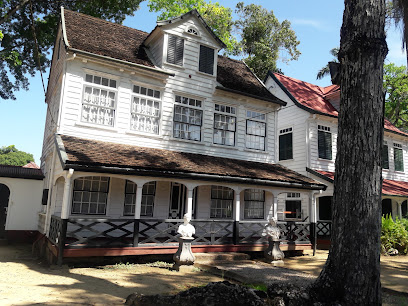
Paramaribo Zoo
Explore the vibrant wildlife and conservation efforts at Paramaribo Zoo, a must-visit attraction in Suriname's capital city.
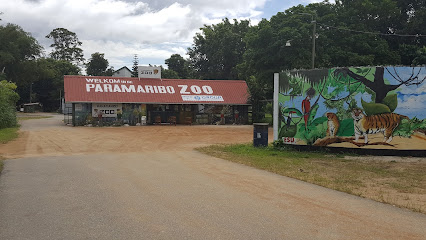
Domburg Waterkant
Discover the serene beauty of Domburg Waterkant, a stunning coastal attraction in Suriname perfect for relaxation and breathtaking views.
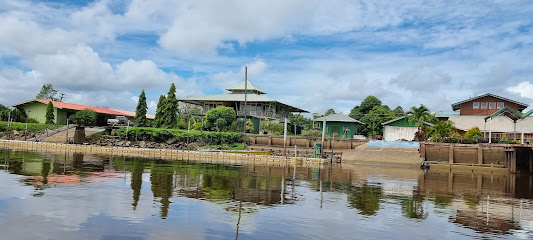
Readytex Art Gallery
Explore Suriname's artistic heart at Readytex Art Gallery, where local creativity meets cultural heritage in Paramaribo.
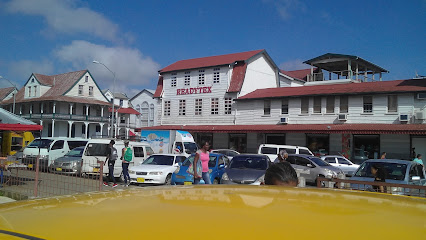
Saint-Peter-and-Paul Basilica of Paramaribo
Explore the grandeur of Saint-Peter-and-Paul Basilica, a stunning architectural masterpiece and a must-visit attraction in Paramaribo, Suriname.
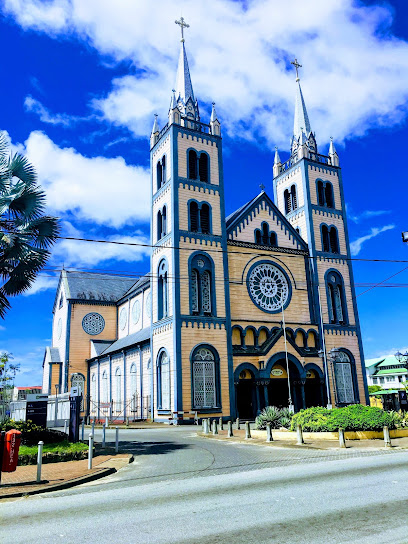
Peperpot Nature Park
Discover the serene beauty and rich biodiversity of Peperpot Nature Park, a peaceful nature preserve in Suriname perfect for outdoor enthusiasts.

Jules Wijdenbosch Bridge
Explore the stunning Jules Wijdenbosch Bridge in Paramaribo, Suriname, where breathtaking views and vibrant nature converge in an unforgettable experience.
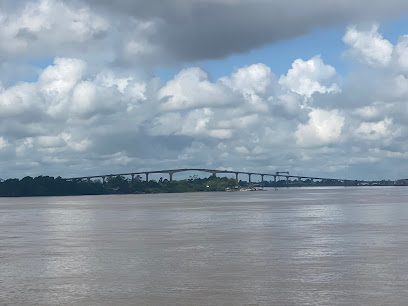
Suikerrietplantage Mariënburg
Explore the historical significance of Suikerrietplantage Mariënburg, a captivating sugarcane plantation in Suriname, and uncover its rich colonial past.
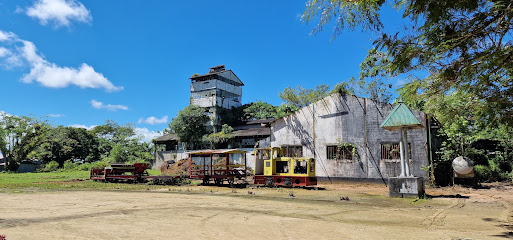
Presidential Palace
Explore the architectural beauty and historical significance of the Presidential Palace in Paramaribo, a landmark of Suriname's rich heritage.
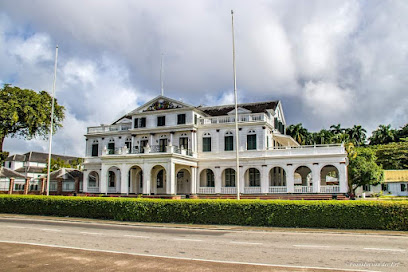
S.I.V. Mosque
Discover the enchanting S.I.V. Mosque in Paramaribo, a stunning architectural marvel that reflects the rich cultural heritage of Suriname.
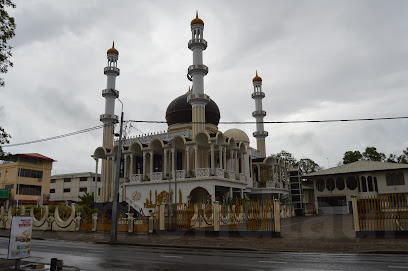
Het Koto Museum
Explore the cultural tapestry of Suriname at Het Koto Museum, where history and heritage come to life through the iconic Koto garment.
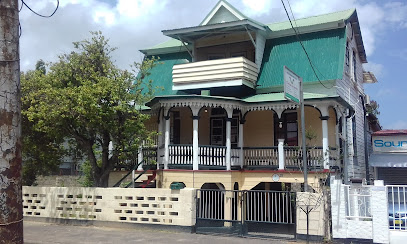
Neveh Shalom Synagogue
Explore the Neveh Shalom Synagogue in Paramaribo, a unique blend of history and spirituality showcasing the rich Jewish heritage of Suriname.

André Kamperveen Stadion
Experience the vibrant sports culture of Suriname at André Kamperveen Stadion, where local passion and community spirit come alive.
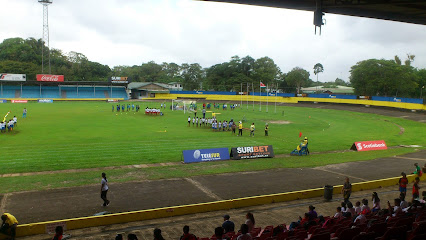
Braamspunt
Discover the tranquil beauty of Braamspunt, a serene beach paradise in Suriname, perfect for relaxation and nature lovers.
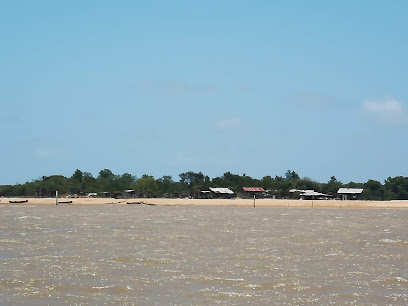
Unmissable attractions to see
Fort Zeelandia
Explore Fort Zeelandia, Suriname's historical fort turned museum, where captivating stories of the past await along the scenic Suriname River.
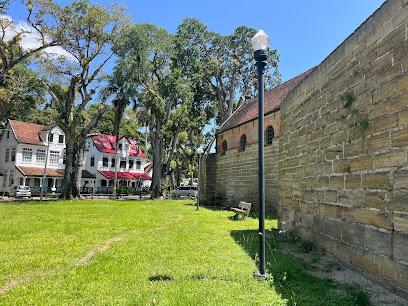
Domburg Waterkant
Experience the natural beauty and vibrant culture at Domburg Waterkant, a must-visit destination in Suriname's stunning coastal landscape.
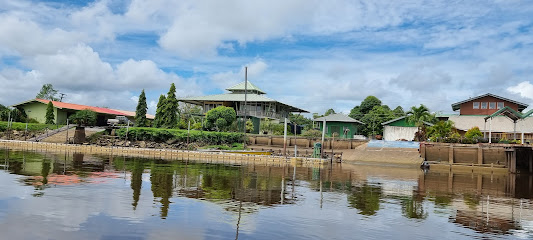
Readytex Art Gallery
Explore the vibrant culture of Suriname at Readytex Art Gallery, where local artistry meets unique souvenirs in a welcoming setting.
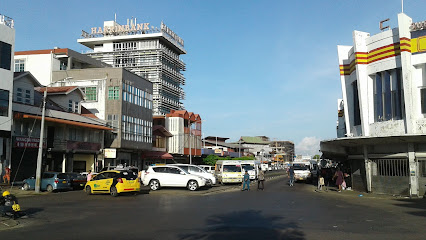
Orange Travel N.V.
Explore Suriname's rich culture and breathtaking landscapes with expert guidance from Orange Travel N.V., your trusted tour operator in Paramaribo.

Colakreek
Explore Colakreek, a serene recreational park in Zanderij, Suriname, perfect for relaxation, water sports, and family adventures amidst lush nature.
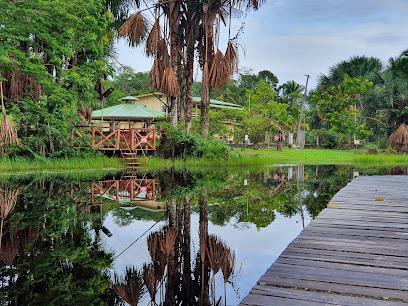
Riverside
Experience the vibrant flavors of Suriname at Riverside, a top bar and grill destination in Paramaribo, overlooking the beautiful waterside.
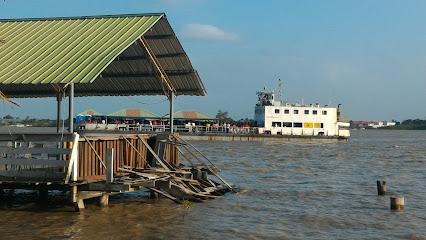
Peperpot Nature Park
Discover the rich biodiversity and tranquil beauty of Peperpot Nature Park, a must-visit nature preserve in Suriname for all nature lovers.
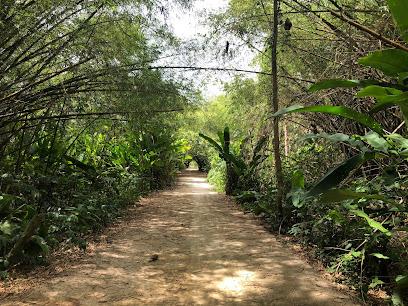
Jules Wijdenbosch Bridge
Experience the breathtaking views and cultural vibrancy at the Jules Wijdenbosch Bridge in Paramaribo, Suriname's architectural gem.
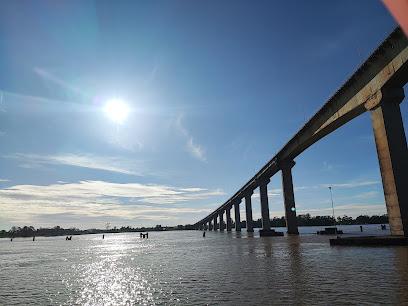
S.I.V. Mosque
Discover the architectural beauty and cultural significance of the S.I.V. Mosque in Paramaribo, a serene haven for visitors and worshippers alike.
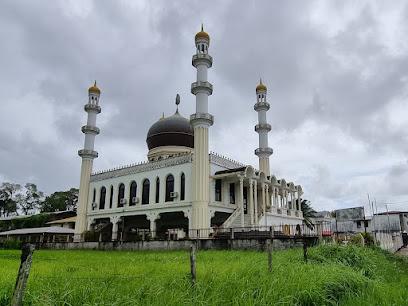
Neveh Shalom Synagogue
Experience the rich heritage and serene atmosphere of the Neveh Shalom Synagogue in Paramaribo, a cultural landmark reflecting Suriname's Jewish history.
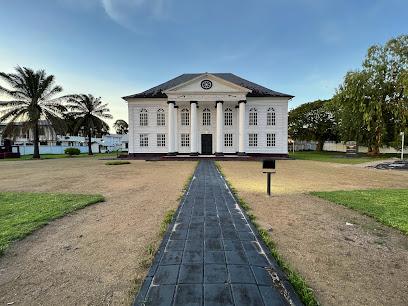
Neotropical Butterfly Park
Experience the enchanting world of butterflies at Neotropical Butterfly Park in Lelydorp, Suriname, where nature and beauty come alive.
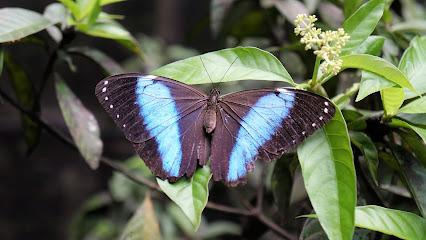
Fort Nieuw Amsterdam
Explore Fort Nieuw Amsterdam, a historical fortress in Suriname offering rich cultural insights and stunning riverside vistas for travelers.

Flower Market Sundays
Explore the enchanting Flower Market Sundays in Paramaribo, a botanical paradise filled with vibrant blooms, local culture, and unforgettable experiences.
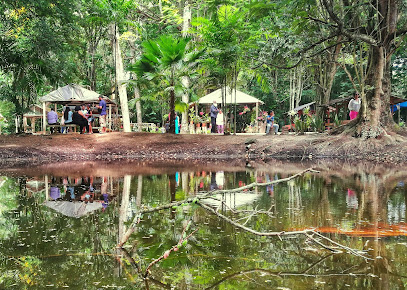
3 Kokro Nature Resort
Explore the serene beauty of 3 Kokro Nature Resort in Bigi Poika, Suriname, a perfect blend of relaxation and eco-adventure amidst lush rainforests.
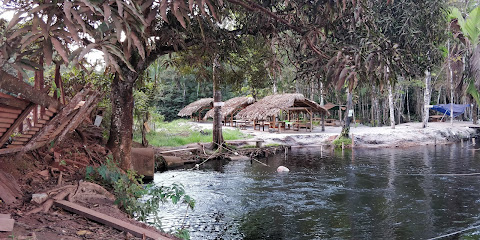
Villa Zapakara
Discover Suriname's rich cultural heritage at Villa Zapakara, a museum that blends history and tradition in the heart of Paramaribo.
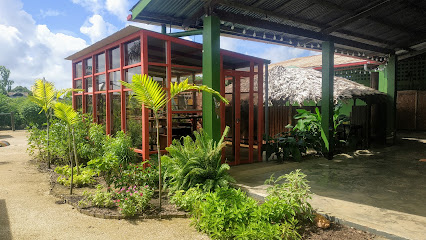
Essential places to dine
Garden of Eden
Experience authentic Thai cuisine at Garden of Eden in Paramaribo - a culinary paradise filled with rich flavors and warm hospitality.
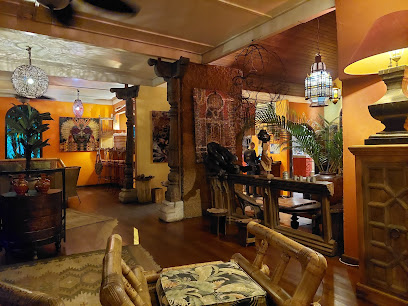
Mirosso
Experience the vibrant flavors of Indonesia at Mirosso in Paramaribo – where every dish tells a story.

De Gadri
Experience authentic Surinamese flavors at De Gadri in Paramaribo - where every dish tells a story.
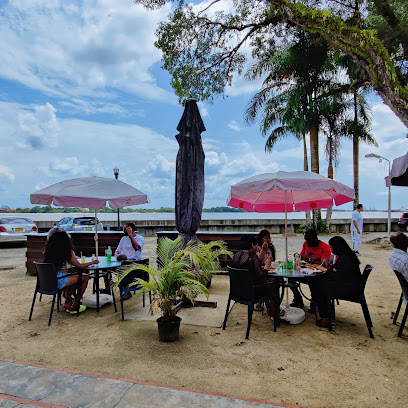
Martin's House of Indian Food
Savor authentic Indian flavors at Martin's House of Indian Food in Paramaribo – where every dish tells a story.

Shaqien
Discover the flavors of Suriname at Shaqien - where local cuisine meets contemporary dining in Meerzorg.
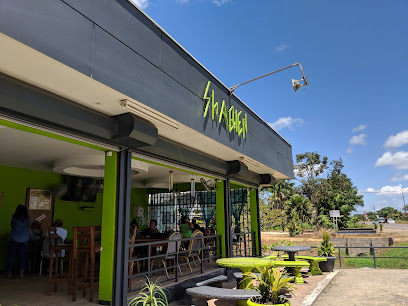
Padre Nostro
Discover authentic Italian flavors and delightful homemade ice cream at Padre Nostro in Paramaribo.
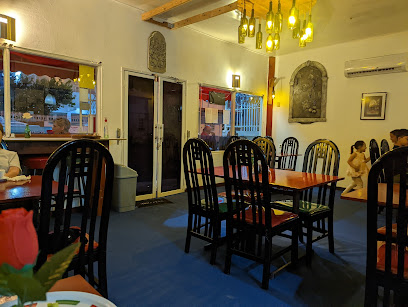
Jakarta Taste Of Java
Discover authentic Indonesian flavors at Jakarta Taste Of Java in Paramaribo - A must-visit for food lovers seeking an unforgettable culinary adventure.
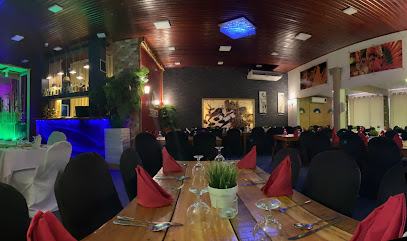
KARAN's Indian Food
Experience authentic Indian cuisine at Karan's Indian Food in Paramaribo - where rich flavors meet warm hospitality.
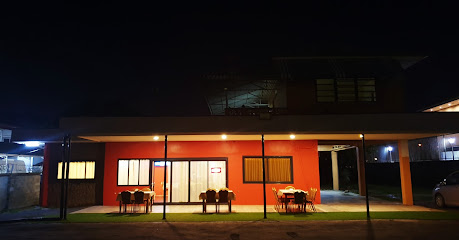
Restaurant Shadien
Discover authentic Surinamese cuisine at Restaurant Shadien in Paramaribo - where tradition meets flavor.

The Garden
Discover the culinary delights at The Garden in Paramaribo - where local flavors meet tranquil surroundings.
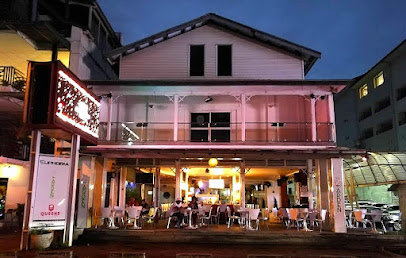
Mezze Restaurant
Discover the flavors of the Mediterranean at Mezze Restaurant in Paramaribo – where every dish tells a story.
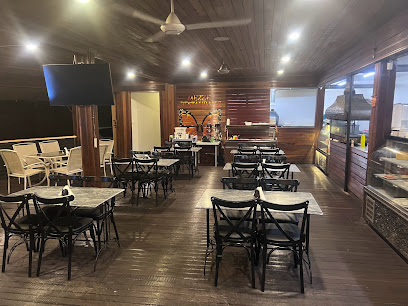
Warung Renah
Experience authentic Indonesian cuisine at Warung Renah in Paramaribo - a culinary gem offering vibrant flavors and warm hospitality.
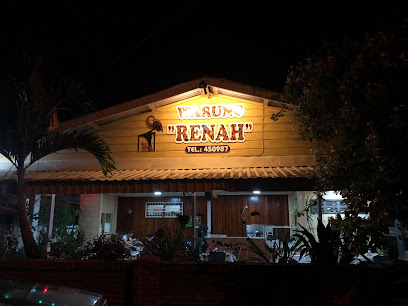
Pane E Vino
Experience authentic Italian cuisine at Pane E Vino in Paramaribo—where every meal is a journey through Italy's rich culinary heritage.
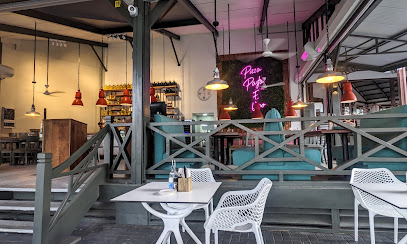
Warung Rono
Savor the rich tastes of Surinamese cuisine at Warung Rono, a cozy restaurant in Paramaribo offering authentic dishes made with fresh local ingredients.
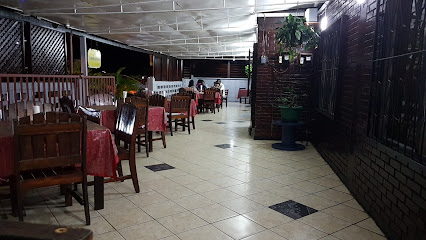
Cirano's restaurant en terras.
Experience the vibrant flavors of Suriname at Cirano's Restaurant in Paramaribo—where local ingredients meet culinary creativity.

Markets, malls and hidden boutiques
Hermitage Mall
Discover a shopper's paradise at Hermitage Mall in Paramaribo, Suriname, where shopping, dining, and entertainment come together for an unforgettable experience.
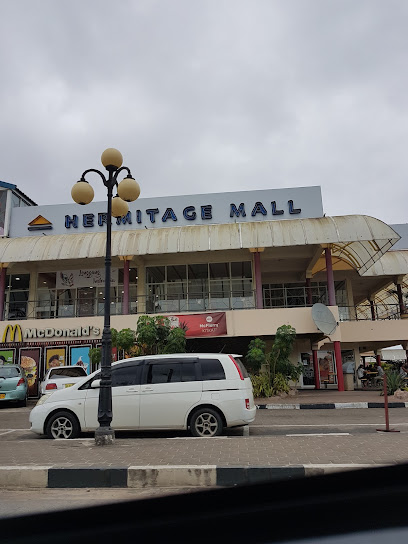
Maretraite Mall
Explore the vibrant shopping scene at Maretraite Mall in Paramaribo, where local culture meets international brands in a delightful retail experience.
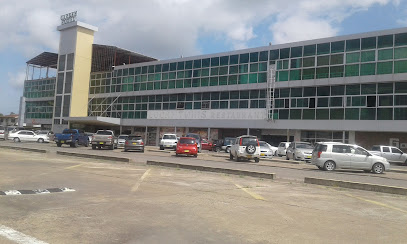
Benny's
Discover Suriname's vibrant culture at Benny's, your go-to gift shop for unique souvenirs and local treasures in Paramaribo.
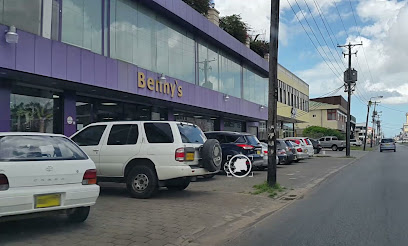
La belle Giftworld
Explore La Belle Giftworld in Paramaribo for unique souvenirs and handmade crafts that capture the essence of Surinamese culture.

Kmc Supermarkt
Explore a vibrant selection of local and international foods at Kmc Supermarkt, a culinary treasure nestled in Paramaribo, Suriname.
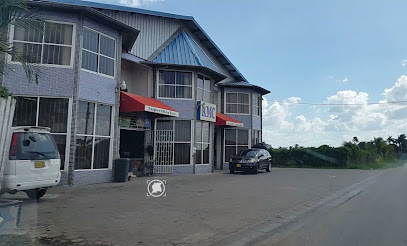
The Old Attic
Explore The Old Attic in Paramaribo for unique gifts, local crafts, and exquisite cigars, capturing the essence of Suriname.
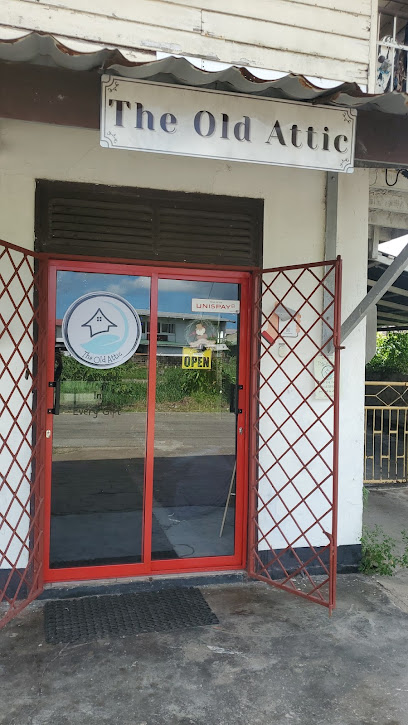
Janelle's Shoes 'N Bags
Explore the vibrant selection at Janelle's Shoes 'N Bags, your go-to destination for stylish footwear and trendy bags in Paramaribo, Suriname.
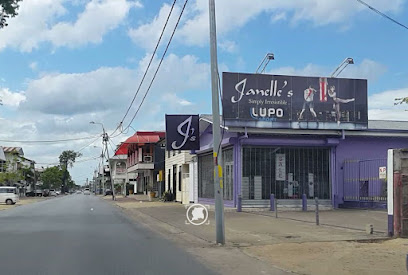
Tweeling Supermarket
Explore Tweeling Supermarket in Jagtlust for a taste of local Surinamese culture and a wide selection of fresh produce and unique flavors.

Zarah clothing
Explore Zarah Clothing in Paramaribo for stylish plus-size fashion that embraces body positivity and comfort.
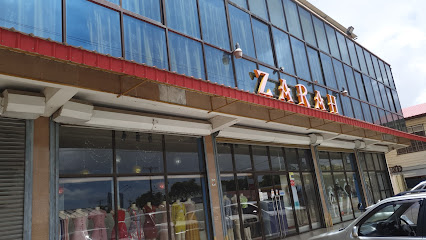
Wong
Explore Wong in Paramaribo for authentic local treasures and a unique shopping experience that reflects the rich culture of Suriname.

Julie's Giftshop
Explore an enchanting selection of Surinamese handicrafts and souvenirs at Julie's Giftshop in Paramaribo.

Boutique Yurmesa
Explore Boutique Yurmesa in Paramaribo for unique, locally crafted treasures that embody Suriname's vibrant culture and artistry.
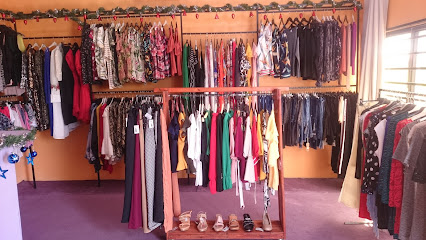
Feel Boutique
Explore the vibrant fashion scene at Feel Boutique, where unique styles and local craftsmanship come together in Paramaribo, Suriname.

Hook The Love
Discover the sweetest delights at Hook The Love, a must-visit dessert shop in Paramaribo, where local flavors meet artisan creativity.

BeePretty
Explore BeePretty in Paramaribo for unique fashion accessories that showcase the vibrant culture of Suriname, perfect for any traveler looking for style.

Essential bars & hidden hideouts
Bar Zuid
Experience the vibrant nightlife of Paramaribo at Bar Zuid, where locals and tourists come together to enjoy great drinks and lively entertainment.
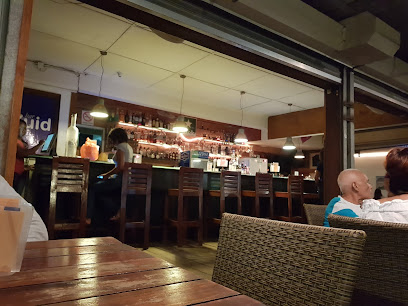
Mingle Paramaribo
Experience the vibrant nightlife at Mingle Paramaribo, where exceptional food, drinks, and a lively atmosphere converge in the heart of Suriname.
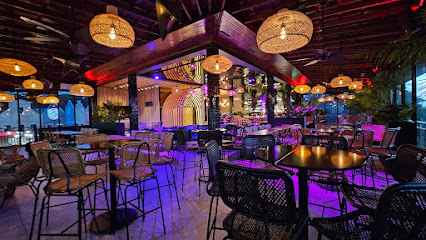
D'Bar
Experience the vibrant nightlife of Paramaribo at D'Bar, where refreshing drinks and live music set the perfect atmosphere for fun.

Murphy's Irish Pub
Discover the charm of Ireland at Murphy's Irish Pub, a lively spot in Paramaribo serving traditional dishes and a wide selection of drinks.
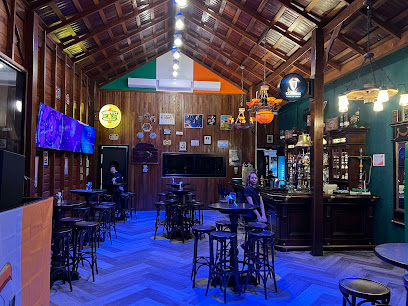
Broki
Experience the vibrant nightlife of Paramaribo at Broki Pub, where music and culture blend in a lively atmosphere.
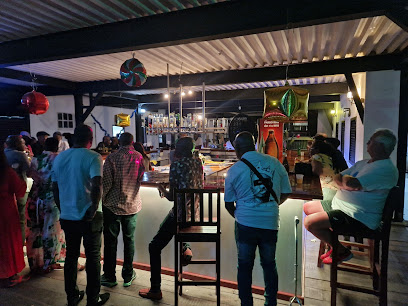
Bar do Bigode
Immerse yourself in the vibrant nightlife of Paramaribo at Bar do Bigode, where local culture meets a lively bar scene.
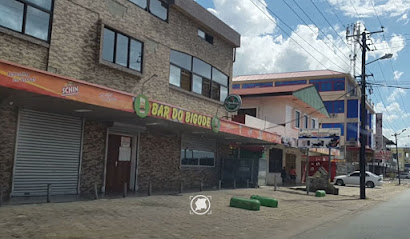
Georgie's Bar & Chill
Discover the vibrant nightlife of Paramaribo at Georgie's Bar & Chill, where lively music meets tropical cocktails in a welcoming atmosphere.
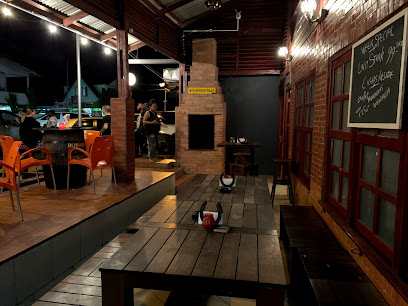
C CORNER BAR AND RESTAURANT
Experience the vibrant nightlife of Paramaribo at C Corner Bar and Restaurant, where delicious food and refreshing drinks await.
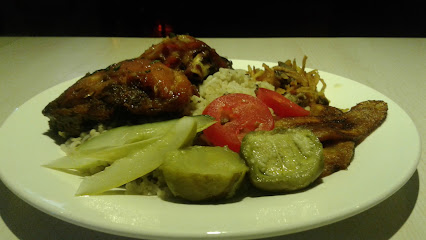
Mix & Serve Cocktails
Experience the vibrant flavors of Suriname at Mix & Serve Cocktails, a premier cocktail bar in Paramaribo offering innovative drinks and a lively atmosphere.

Tjalta Bar & Restaurant
Discover the vibrant atmosphere and delicious offerings at Tjalta Bar & Restaurant, a must-visit spot in Alkmaar, Suriname.
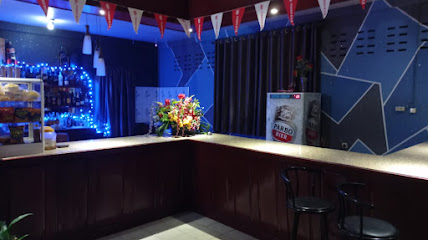
Tipsy Bar & Lounge
Experience the vibrant nightlife and delicious fast food at Tipsy Bar & Lounge in Paramaribo, Suriname - a perfect blend of relaxation and fun.
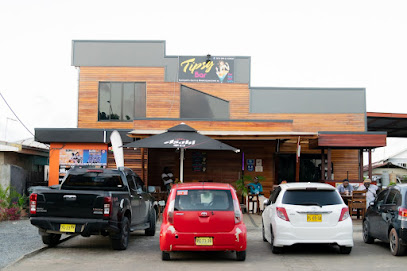
N’Joy Bar & Lounge
Discover the vibrant nightlife and local culture at N’Joy Bar & Lounge in Paramaribo, a perfect spot for relaxation and socializing.

Sky Lounge & Bar
Discover the enchanting Sky Lounge & Bar in Paramaribo - a perfect blend of stunning views, refreshing drinks, and vibrant nightlife.
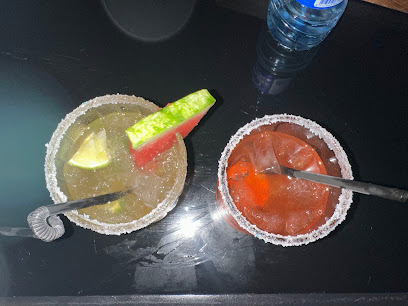
NW. HAVEN BAR
Experience the vibrant nightlife at NW. Haven Bar, where relaxation meets local culture in the heart of Paramaribo, Suriname.

RISING SUN WINE SHOP & COCKTAIL BAR SURINAME
Discover the vibrant atmosphere of Rising Sun Wine Shop & Cocktail Bar in Paramaribo, where exquisite wines and cocktails meet local charm.

Local Phrases
-
- HelloAlo
[ah-loh] - GoodbyeAyo
[ah-yo] - YesYa
[yah] - NoNoo
[noo] - Please/You're welcomeMi lobbi
[mee lah-bee] - Thank youDanki
[dahn-kee] - Excuse me/SorrySori
[soh-ree] - How are you?Fa wi de?
[fah wee deh] - Fine. And you?Boni. En yu?
[boh-nee. en yoo] - Do you speak English?Yu taki Inglish?
[yoo tah-kee in-glish] - I don't understandMi no sabi
[mee noh sah-bee]
- HelloAlo
-
- I'd like to see the menu, pleaseMi wani si a menu, mi begi
[mee wah-nee see ah meh-noo, mee bay-gee] - I don't eat meatMi no eetu meti
[mee noh ee-too meh-tee] - Cheers!Proost!
[prohst] - I would like to pay, pleaseMi wani pai, mi begi
[mee wah-nee pie, mee bay-gee]
- I'd like to see the menu, pleaseMi wani si a menu, mi begi
-
- Help!Aid!
[ah-eed] - Go away!Go na wei!
[goh nah way] - Call the Police!Bel politie!
[behl poh-lee-tee] - Call a doctor!Bel dokter!
[behl dohk-ter] - I'm lostMi dede
[mee deh-deh] - I'm illMi siki
[mee see-kee]
- Help!Aid!
-
- I'd like to buy...Mi wani bai...
[mee wah-nee bah-ee] - I'm just lookingMi e seti
[mee eh say-tee] - How much is it?Fa mofo?
[fah moh-foh] - That's too expensiveDat bigi teki
[daht bee-gee teh-kee] - Can you lower the price?Yu man bari pris?
[yoo mahn bah-ree prees]
- I'd like to buy...Mi wani bai...
-
- What time is it?Fa teni de?
[fah teh-nee deh] - It's one o'clockNa wan ten
[nah wahn teh] - Half past (10)Half ten
[hahlf teh] - MorningMowning
[moh-ning] - AfternoonAftei
[ahf-teh] - EveningAfond
[ah-fohnd] - YesterdayGisteri
[gis-teh-ree] - TodayDedey
[deh-deh] - TomorrowMorgo
[mohr-goh] - 1Wan
[wahn] - 2Tu
[too] - 3Dri
[dree] - 4Fowru
[fohr-roo] - 5Fayfu
[fay-foo] - 6Siksi
[see-kshee] - 7Sebi
[seh-bee] - 8Ati
[ah-tee] - 9Nown
[nohn] - 10Ten
[tehn]
- What time is it?Fa teni de?
-
- Where's a/the...?Fa de...?
[fah deh] - What's the address?Fa de adres?
[fah deh ah-drehs] - Can you show me (on the map)?Yu man sori mi (opu a mapu)?
[yoo mahn soh-ree mee (oh-poo ah mah-poo)] - When's the next (bus)?Fa a nofo (bus)?
[fah ah noh-foh (boos)] - A ticket (to ....)Wan tiketi (te ...)
[wahn tee-keh-tee (teh)]
- Where's a/the...?Fa de...?
History of Mariënburg
-
Mariënburg, located in the Commewijne District of Suriname, was founded in the late 19th century as a sugar plantation and factory. Established by the Dutch colonial government around 1882, it was initially managed by the Netherlands Trading Society. The fertile soil and strategic location near the Commewijne River made it an ideal spot for growing sugar cane and processing it into sugar.
-
To work the plantations and factory, laborers were brought in from British India and Java (Indonesia) under contract. These laborers were part of a larger wave of indentured labor that shaped the demographics of Suriname. The conditions were harsh, and many laborers faced significant hardships, but they contributed immensely to the development of Mariënburg and its sugar industry.
-
One of the pivotal moments in Mariënburg's history was the labor strike of 1902. Workers, dissatisfied with their working conditions and pay, went on strike. The strike escalated, leading to violent confrontations. The colonial military intervened, resulting in the deaths of several workers. This event highlighted the tensions between the colonial authorities and the labor force, marking a significant moment in the struggle for workers' rights in Suriname.
-
The sugar factory at Mariënburg remained operational until the mid-20th century. However, due to economic challenges, competition, and changes in the global sugar market, the factory eventually ceased operations in 1986. The closure marked the end of an era for Mariënburg, transitioning it from an industrial hub to a historical site.
-
Today, Mariënburg stands as a testament to Suriname's colonial past and the diverse cultural influences that shaped it. The remnants of the sugar factory and the workers' quarters offer a glimpse into the lives of those who lived and worked there. The area is a popular site for tourists interested in Suriname's history and the legacy of its plantation economy. Efforts have been made to preserve these historical sites, and they serve as a reminder of the complex and multifaceted history of Mariënburg.
Mariënburg Essentials
-
Mariënburg is located in the Commewijne District of Suriname. The nearest international airport is Johan Adolf Pengel International Airport in Paramaribo, approximately 50 kilometers away. From Paramaribo, you can take a taxi or a bus to Mariënburg. Another popular option is to take a boat ride along the Suriname River, which provides a scenic view and a unique travel experience.
-
Mariënburg is a small town, and its attractions are easily accessible by foot or bicycle. For longer trips, local taxis are available and relatively inexpensive. Public buses operate within the town and connect to nearby villages and towns. Renting a car is also an option, but be aware that road conditions can vary.
-
The official currency in Suriname is the Surinamese Dollar (SRD). Credit cards are accepted in some hotels, restaurants, and shops, but it's advisable to carry cash, especially in smaller establishments and rural areas. ATMs are available in Mariënburg, but it is wise to withdraw sufficient cash in Paramaribo before traveling to ensure you have enough funds.
-
Mariënburg is generally a safe destination for tourists. However, like any travel destination, it is advisable to take standard precautions. Avoid walking alone at night in unfamiliar areas and keep an eye on your belongings in crowded places. There are no specific high-crime areas targeting tourists in Mariënburg, but it is always best to stay vigilant and aware of your surroundings.
-
In case of emergency, dial 115 for immediate assistance. The local police station and medical facilities are available in Mariënburg. It is recommended to have travel insurance that covers medical emergencies. For minor health issues, there are pharmacies in the town where you can purchase over-the-counter medications.
-
Fashion: Do dress modestly, especially when visiting religious sites. Avoid wearing revealing clothing. Religion: Do respect local customs and traditions. Always cover your head when entering temples or religious sites. Public Transport: Do be respectful and give up your seat to elderly passengers. Don't eat or drink on public transport. Greetings: Do greet people with a handshake and a smile. Eating & Drinking: Do try local delicacies and accept food offerings graciously. Don't refuse hospitality, as it is considered impolite.
-
To experience Mariënburg like a local, visit the local markets where you can buy fresh produce and traditional Surinamese goods. Engage with locals, as they are often friendly and willing to share stories about the town's history and culture. Don't miss visiting the sugarcane factory ruins, which offer a glimpse into the town's colonial past. For a unique experience, take a boat tour along the rivers and explore the surrounding natural beauty.
Trending Landmark in Mariënburg
-
Palmtree Garden
-
Fort Zeelandia
-
Paramaribo Zoo
-
Domburg Waterkant
-
Readytex Art Gallery
-
Saint-Peter-and-Paul Basilica of Paramaribo
-
Peperpot Nature Park
-
Jules Wijdenbosch Bridge
-
Suikerrietplantage Mariënburg
-
Presidential Palace
-
S.I.V. Mosque
-
Het Koto Museum
-
Neveh Shalom Synagogue
-
André Kamperveen Stadion
-
Braamspunt
Nearby Cities to Mariënburg
-
Things To Do in Paramaribo
-
Things To Do in Lelydorp
-
Things To Do in Moengo
-
Things To Do in Brokopondo
-
Things To Do in Albina
-
Things To Do in Skeldon
-
Things To Do in New Amsterdam
-
Things To Do in Kwakwani
-
Things To Do in Ituni
-
Things To Do in Linden
-
Things To Do in Bartica
-
Things To Do in Anna Regina
-
Things To Do in Lethem
-
Things To Do in Kamarang
-
Things To Do in Sangre Grande







